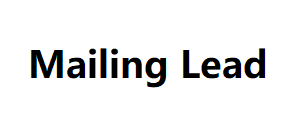Email deliverability is the likelihood that your emails will be deliver to the inbox of your recipients. If your emails are not deliver, they will either sent to the spam folder or reject altogether. This have a devastating impact on your email marketing campaigns, as it means that your messages will not be seen by your target audience. There are a number of factors that can affect email deliverability, including: The quality of your email list The content of your emails The sender’s reputation The email service provider (ESP) you use In this article, we will discuss some of the best practices for optimizing email deliverability and avoiding spam filters. 1. Use a clean email list The quality of your email list is one of the most important factors affecting email deliverability. If your list contains a lot of invalid or unengaged email addresses, your emails will be more likely to be mark as spam. To ensure that your email list is clean, you should regularly remove any addresses that have bounced or have not been opened in a long time. You can also use a service like Mailchimp or Constant Contact to help you clean your list.
Write engaging emails The content of your emails also plays
A role in email deliverability. If your emails are not engaging, recipients are more likely to mark them as spam or unsubscribe from your list. To write engaging emails, you should focus on creating content that is relevant to your audience and that provides value. You should also use clear and concise language and avoid using too much jargon or technical terms. 3. Use a reputable ESP The ESP you use can also affect email deliverability. Some ESPs have a better reputation than others. And this impact the Image Manipulation Service way that your emails are handled by ISPs. When choosing an ESP, you should look for one that has a good reputation and that offers features that can help you improve email deliverability. 4. Authenticate your emails Email authentication is a process that helps to verify the sender of an email. When an email is authenticat, it is more likely to deliver to the inbox and less likely to be mark as spam. There are two main types of email authentication: SPF and DKIM. SPF tells ISPs which

IP addresses are authorized to send emails on behalf of your domain
DKIM adds a digital signature to your emails, which helps to verify their authenticity. 5. Use a good subject line The subject line is the first thing that recipients will see. When they receive your email, so it is important to make sure that it is clear, concise, and attention-grabbing. A good subject line should accurately reflect the content of your email and should make recipients want to open it. You Mailing Lead should also avoid using spammy words or phrases in your subject lines. 6.. ISPs to identify spammers. will damag. To avoid spam traps, you should only send emails to addresses that have opted in to receive your messages. You should also avoid using purchased or rented email lists, as these lists often contain spam traps.






